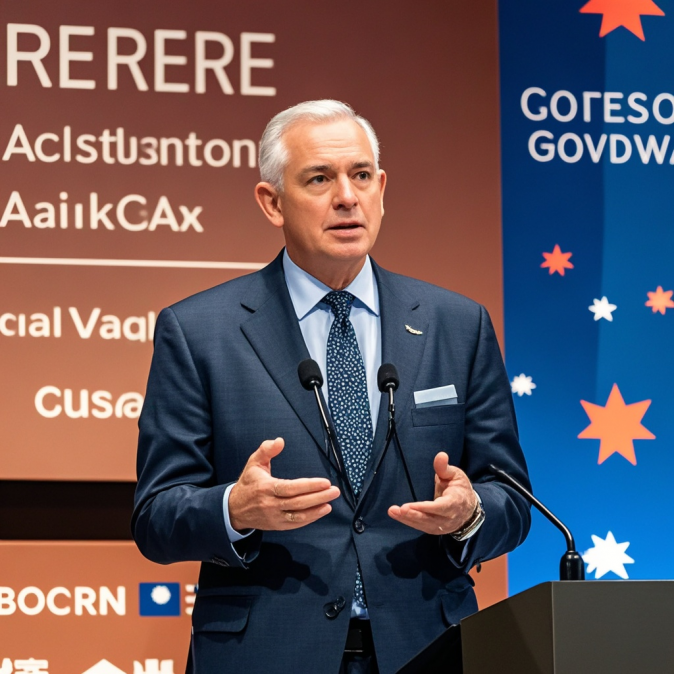RBA Assistant Governor Says Australian Dollar's Recent Volatility Has "Increased Significantly"
Recently, remarks by Christopher Kent, Assistant Governor of the Reserve Bank of Australia (RBA), have drawn attention in financial markets. He noted that earlier this month, as traders assessed the potential impact of U.S. tariff announcements, volatility in global foreign exchange markets "increased significantly," and it was only in recent days that the markets became "more stable."
At the beginning of the month, the adjustment of U.S. tariff policies was like a bombshell dropped into financial markets. As U.S. President Donald Trump announced reciprocal tariff measures, global financial markets were instantly thrown into turmoil. As a key component of the international trade and financial system, the foreign exchange market bore the brunt of the impact. Among these fluctuations, the Australian dollar (AUD) experienced particularly sharp volatility.
In his speech in Sydney on Tuesday, Kent specifically mentioned that after Trump announced reciprocal tariffs, the AUD/USD exchange rate plummeted by a staggering 4.5%. This decline not only reflected the market's immediate reaction to U.S. tariff policies but also highlighted the vulnerability of the Australian dollar amid shifts in the global economic landscape.
From a broader perspective, the U.S., as the world's largest economy, has far-reaching influence with its tariff policy adjustments. Changes in tariffs directly affect trade costs, which in turn impact the import and export trade of related countries. Australia, as a country reliant on international trade, has an economy closely tied to global trade conditions. The changes in U.S. tariff policies have introduced greater uncertainty for Australian exporters, exacerbating market concerns about Australia's economic outlook—a key driver behind the depreciation of the Australian dollar.
For the Australian dollar itself, its exchange rate fluctuations are influenced by multiple factors, including domestic economic data, global commodity prices, and monetary policies of major economies. The market volatility triggered by U.S. tariff policies has further amplified the instability of the AUD exchange rate. Against the backdrop of significantly heightened volatility in global foreign exchange markets, the sharp decline in the AUD/USD exchange rate also reflects a wavering confidence among investors in AUD-denominated assets.
Analyzing the market impact, the substantial fluctuations in the Australian dollar have multifaceted effects on Australia's domestic economy. For importers, a weaker AUD means higher import costs, which could lead to rising domestic prices and subsequently exert inflationary pressure. For exporters, while a depreciated AUD may enhance price competitiveness to some extent, the trade barriers imposed by U.S. tariff policies could offset this advantage, leaving export-oriented businesses in a challenging operating environment.
On the international stage, the volatility of the Australian dollar also influences global investors' asset allocation. Some investors holding AUD-denominated assets may suffer losses due to the sharp depreciation, prompting them to adjust their portfolios and triggering shifts in capital flows across global financial markets.
It is worth noting that although market volatility has eased recently, the global economic environment remains fraught with uncertainty. Factors such as the trajectory of U.S. tariff policies, progress in international trade negotiations, and monetary policy adjustments by major economies could once again spark volatility in foreign exchange markets. The RBA must also closely monitor the movement of the AUD exchange rate and take timely monetary policy measures to stabilize the domestic economy and financial markets.
In summary, the performance of the Australian dollar amid global foreign exchange market volatility serves as another reminder of the interconnectedness of the global economy and financial markets. Moving forward, both investors and policymakers will need to pay closer attention to changes in the international economic landscape to navigate potential risks and challenges.
